New York’s competitive real estate market can be quite overwhelming for both first-time and experienced buyers. Our city has some of the most diverse housing stock in the country, from 19th Century Brownstones and Tudor-style Row Houses, sprawling Victorian mansions and detached Colonials, to mixed-use walk-ups, industrial lofts, new build condominiums, expansive pre-war co-ops, and luxury penthouses. There are so many housing types with varying financing and investment considerations, that many buyers don’t know where to begin.
APARTMENTSare the majority of available real estate in New York City. Many first-time buyers opt for an apartment as their starter home, while others simply prefer building amenities and conveniences, without the responsibility.
Condos
Condominium apartments are most familiar to buyers, and unlike Coops, are considered real property with similar financing options and less restrictive use. NY is experiencing a development boom in the 5 boroughs, surrounding counties and Hudson Valley, with Condos being the fastest growing segment of new real estate. Compared to Coops, Condos generally have greater resale value, upmarket renovations, lower maintenance costs, increased building amenities, and the ability to buy, sell, and rent with much less restriction than a Coop. Condo apartments and buildings vary from Studios to Duplexes in small multi-family walk-ups to high-rise luxury complexes, and tend to be in more commercial and industrial neighborhoods. Condos are pricier per square foot, however their less restrictive nature make them a very attractive option for buyers looking for a turnkey home with expansive building amenities, income potential, and opportunity for quick resale.
Co-Ops
Although more Condos are available for sale, Co-ops are the vast majority, almost 75%, of NYC apartments. Coops have much less turnover in the market because they tend to be owned by native New Yorkers, have a much lower buy-in, offer larger units for growing families, and are found in more established centrally located neighborhoods. The greatest advantage is price, as Co-ops cost significantly less per square foot than Condos of comparable size. Coops tend to be in pre-war buildings with basic amenities, have more restrictive Board rules for subletting and ownership, higher common charges, and some have income restrictions as you would find in HDFC and Mitchell Lama buildings. Most importantly, Coops are not “true” real estate. Coop buyers buy shares in a cooperation (your building) and receive a proprietary lease at closing, rather than a deed, and common charges are based on your percentage of shares as determined by the size of your unit. Although Coop Boards have more influence on purchase approvals, Coop buildings have far less owner turnover which results in more long-term ownership and community building.
HOUSES are the more traditional option for buyers looking for more square footage, private outdoor space, and unrestricted use of their home. The diversity of NYC’s housing offers buyers so many options for living, growing and investment.
Single Family
Single family homes have one livable unit. Most of these properties can be found in the outer boroughs of Brooklyn, Queens, The Bronx and Staten Island, and encompass the mass majority of housing in surrounding suburban counties. Single family homes are more in demand, preferred by first-time home buyers looking for a detached or semi-detached home, parking, and yard space for their family. Single Family is a class designed for one family to live in.
Multi-Family
In contrast, a Multi-Family classification enables the owner to have multiple housing units in one building, which enables owners to live and collect rental income. Brownstones, Townhouses, and Colonial row houses are primary examples of multi-family properties. Although multi-families can be a higher buy-in, they are cheaper per square foot than single family houses, and range in size from 2 to 4 family dwellings, allowing owners greater income potential to offset housing costs.
Mixed-Use Property
Mixed-Use buildings are multi-family properties that are mixed residential and commercial dwellings. Mixed-Use properties are all over our city and line every shopping district in NYC. Some examples are: Franklin and Vanderbilt Avenues in Brooklyn, Upper East Side Doctor’s Row, Third Avenue in Yorkville and East Harlem, and Astoria Blvd in Queens. Typically, a Mixed-Use property consists of a storefront at the ground level, with residential housing on the upper floors. Varieties include a doctor’s office with a single residential unit above, a large commercial tenant with multiple residential apartment units above, or smaller 2-4 unit walk-up with a retail space (restaurant, store, dry cleaners, bodega) at the street level. Depending on size, mixed-use properties may require larger downpayments typical to commercial purchases, 40%, or for smaller buildings, 20-25% down as required for the purchase of a single or multi-family residential home. Mixed-Use properties are a great investment for any buyer, and their locations are more attractive to potential commercial and residential tenants alike. Mixed-Use owners can secure an anchor commercial tenant to ease their monthly costs, while building up their residential tenancies.
Loans/Mortgage
Contact your preferred lender (bank) and get pre-approved for a home loan. For buyers financing their home purchase, loan pre-approvals provide a hard figure and the reality of what you can afford. A thorough loan approval can detail your lending maximum for each housing type (apartment/single/multi-family) and available loan programs (Conventional/FHA/VA). It also lets listing agents, sellers, and your own agent know you are a qualified buyer.
Downpayment
Downpayments vary based on the loan program and type of property you are purchasing. Typically, most conventional loans require a downpayment equal to 20% of the purchase price, however, Coops Boards and FHA loan programs geared toward increased home ownership, may require only 10% down for Coop buyers, or under the FHA program, as little as 3.5% down on a residential purchase. Commercial and mixed-use properties can require upwards of 40% down.
